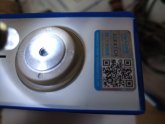Veratas
Never be the most conductive part of the circuit
- Joined
- Jul 3, 2020
- Messages
- 17
Hi all -
Looking for a little bit of advice. Still fairly new to dealing with batteries.
I order four Varicore 90AH LFP cells about 4 months ago off of AliExpress, but just finally got around to using them. Long story short, the negative post hole on one of the cells looks to have some corrosion in it. It took a bit of force to get the screw in place, and once it was, I would get <1v across the cell measuring screw to screw. Testing from the actual pads on the cell, though, gives a normal voltage, so the cell itself seems to be fine.
So, I'm wondering if anyone's run into this, and if they have suggestions for cleaning it out. Or are there possible issues with the cell that would warrant a return? Am I likely
On a side note, I'm curious if anyone else has bought similar Varicore/Liitokala (sounds like they're the same thing) and what kind of experience they've had with them. I didn't find much information on them when I bought them, which was a bit of a red flag. I still bought them, even though the price seemed too good to be true.
Appreciate any advice/info anyone might have.
Looking for a little bit of advice. Still fairly new to dealing with batteries.
I order four Varicore 90AH LFP cells about 4 months ago off of AliExpress, but just finally got around to using them. Long story short, the negative post hole on one of the cells looks to have some corrosion in it. It took a bit of force to get the screw in place, and once it was, I would get <1v across the cell measuring screw to screw. Testing from the actual pads on the cell, though, gives a normal voltage, so the cell itself seems to be fine.
So, I'm wondering if anyone's run into this, and if they have suggestions for cleaning it out. Or are there possible issues with the cell that would warrant a return? Am I likely
On a side note, I'm curious if anyone else has bought similar Varicore/Liitokala (sounds like they're the same thing) and what kind of experience they've had with them. I didn't find much information on them when I bought them, which was a bit of a red flag. I still bought them, even though the price seemed too good to be true.
Appreciate any advice/info anyone might have.




